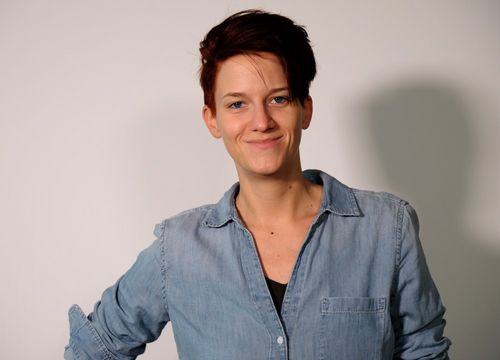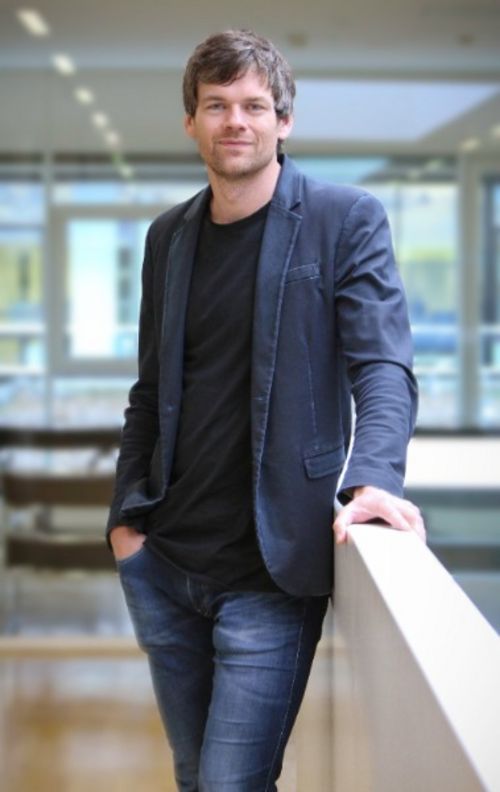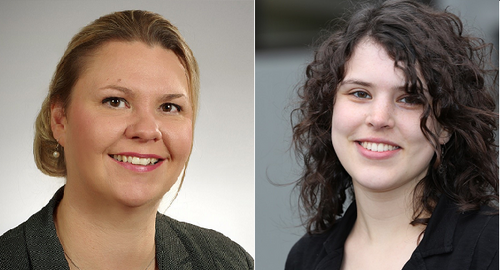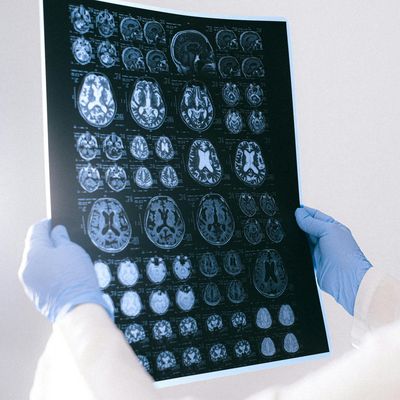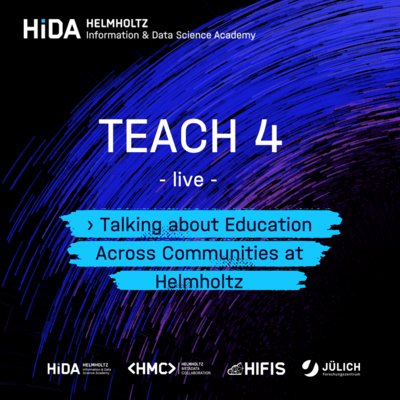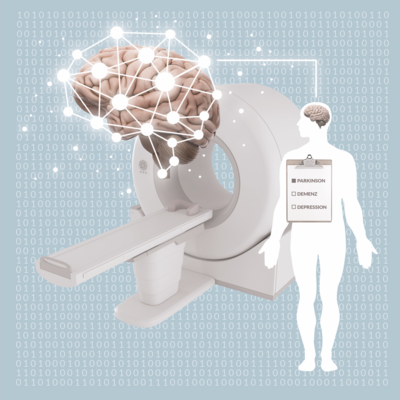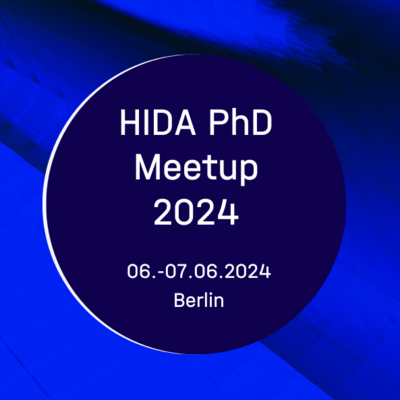Building bridges between medicine and data science

At HIDSS4Health, health and data science research projects are brought together in a unique doctoral program – with synergistic effects for the participating cooperation partners, the international doctoral students, and medical progress. An insight into an unusual graduate school.
On a January evening in 2020, Verena Bitto is sitting on her sofa in Bockenheim near Frankfurt, with her computer on her lap and a steaming cup of coffee on the table, clicking through websites for doctoral programs. There are plenty of offers for highly qualified computer scientists like her. “You're just inundated,” she says. But data science alone is not enough for the 32-year-old. She would like to work with researchers from other disciplines on complex problems, such as how to better treat cancer. During her online research, Bitto came across a graduate school run by the Helmholtz Association: HIDSS4Health. “I knew right away, wow, this is it.” It entailed three years of intensive interdisciplinary research. It was an opportunity to combine her interest in medicine and molecular biology with her expertise in information science; a chance to immerse herself 100 percent in research without time-consuming teaching obligations.
Verena Bitto has now been working on her PhD at HIDSS4Health since September 2020. She wants to use data analyses to find out what influence oxygen supply to tumors has on head and neck cancer treatment. She examines image information, analyzes molecular information from tumors, and tries to put all the data together to form a big picture. She exchanges ideas every week with life science colleagues who collect data sets in the lab. How is the data created in the first place, where can errors occur or unusual patterns emerge, did something go differently in the lab this time during the measurements? Conversely, what do the data scientists need for meaningful data analysis? Bitto says, “It's this close collaboration that enormously advances both sides.”
Big data as the key to health research
Verena Bitto is one of 37 doctoral students at HIDSS4Health. Since April 2019, young scientists have been conducting research here as part of a very special program. At HIDSS4Health, physicians, life scientists, and data scientists work together to gain new insights and develop new methods in health research, from cancer therapies and genetic analyses to robotics for surgery. It has long been clear that big data is a central key to advancing health sciences.
However, the variety and quantity of data are almost unmanageable. The knowledge of physicians and life scientists alone is no longer enough to use it correctly and effectively. They need to collaborate with data science experts who can help them uncover the nuggets of insight that lie in the data. The decisive factor here is that both sides must not only be top experts in their field of specialty, but must also be as well versed as possible in the collaborative discipline. That way, data scientists can get a feel for what medical research needs and physicians and biologists can assess how data science can be used.
“With HiDSS4Health, we want to bridge the gap between medicine and data science,” says Klaus Maier-Hein, Professor of Medical Image Computing at the German Cancer Research Center (DKFZ) in Heidelberg and one of the three HIDSS4Health spokespersons. Baden-Württemberg is an ideal location for building bridges. DKFZ and Heidelberg University are world-renowned for medical research and health sciences, and for years there has also been a strong focus on computer science. The first faculty for computer science in Germany was established at the Karlsruhe Institute of Technology (KIT). Today, KIT is a world leader in data science and artificial intelligence (AI). What could be more obvious than to create a joint doctoral program from the concentrated expertise of the three institutions?
“There is great energy coming from the collaboration. Researchers who almost never talked to each other before are now coming together quite automatically.”
Klaus Maier-Hein, spokesperson of HIDSS4Health
Diverse energies through cooperation
The result is a flexible mix of compulsory modules and events. One of the compulsory modules is a joint one-semester lecture series on data science and health, in which experts summarize the material covered in a semester of lectures on topics such as big data and high-performance computing in ninety minutes. Since the lecture series have been held online, researchers from more than 20 other institutions have also been registering for them.
In the steering committee, DKFZ professor Maier-Hein exchanges ideas on school development and research cooperation on a monthly basis with two representatives from KIT and Heidelberg University, representatives of the research groups, and the PhD students. The PhD students are supervised in tandem – by a data sciences group leader and a principal investigator (PI) from the respective application area. HIDSS4Health spokesperson Klaus Maier-Hein is pleased. “There is great energy coming from the collaboration. Researchers who almost never talked to each other before are now coming together quite automatically.” A good two years after the school was founded, he says, there has been an “incredible leap in collaboration.” Department heads at DKFZ and the computer science faculty exchange ideas and basic researchers at the university knock on his door at DKFZ. He asks them if they have heard of the research groups from their fields at HIDSS4Health. Many new projects have arisen through such interactions. The federal state of Baden-Württemberg is also impressed by the school. This year, the Ministry of Science is sponsoring six additional doctoral positions with state funding.
In January of each year, Ines Reinartz, coordinator of HIDSS4Health at KIT, and her colleague Kathrin Brunk from DKFZ have their hands full. The new projects are advertised online, and many of those interested become aware of the offers via the Helmholtz Information & Data Science Academy (HIDA), the central umbrella organization of all six Helmholtz Information & Data Science Schools, and the social media channels of the partner institutions. And it's catching on. In 2021, 270 people applied for the 13 new projects, with eighty percent coming from top institutes around the world. “We're particularly pleased with the comparatively large number of female applicants,” says Reinartz. “Forty-one percent of the participants in the 2021 online applications were women.” A total of 13 female data scientists are currently conducting research at the school.
“Peer exchange”
Verena Bitto looked at several projects on the online event catalog. “We were able to jump from project to project, with PIs describing their plans,” Bitto says. “It wasn't so much the selection interviews, but rather the peer exchange that impressed me.” In the end, the project on head and neck cancer fascinated Bitto the most. “Everything felt right there: subject matter, team, and spirit.”
For just under a year, Bitto has enjoyed the close, interdisciplinary collaboration at HIDSS4Health: whether at the annual retreats or hackathons, at the summer schools or meetings with PhD students from the other Helmholtz Information & Data Science Schools, or, of course, in regular contact with her PI tandem and interdisciplinary research teams. “I would choose it again in a heartbeat.” And if Bitto wants to attend a seminar on a special aspect of her research topic, wants further training in time management, or is looking for support with her work, all she needs to do is call coordinator Reinartz.
It's late afternoon, and doctoral student Verena Bitto is analyzing multidimensional data sets on her laptop. She clicks through videos and papers from other research groups. She listens to online lectures every week on the development of cancer research at DKFZ. Sometimes, she says, she doesn't understand anything at first, but often the lectures are an oasis of rich discoveries for her. What's happening in neighboring fields, what are other groups currently working on? Bitto has just written the first draft of a paper for her working group. The topic: whether the probability of survival in oxygen-deficient tumor cells can be increased if an additional drug is administered during standard radiochemotherapy - findings from initial experiments on mice. Next week she’ll review date with colleagues. What is feasible? Where is the gap from the respective specialist perspective?
“It feels good to apply my computer science skills to cancer research,” Bitto says. She has seen all too often in family and friends what dying of cancer means. “If malignant tumors can be treated more precisely and effectively through my research, I'll be happy. Even if it's just a small contribution to something really big.”
Author: Anja Dilk

